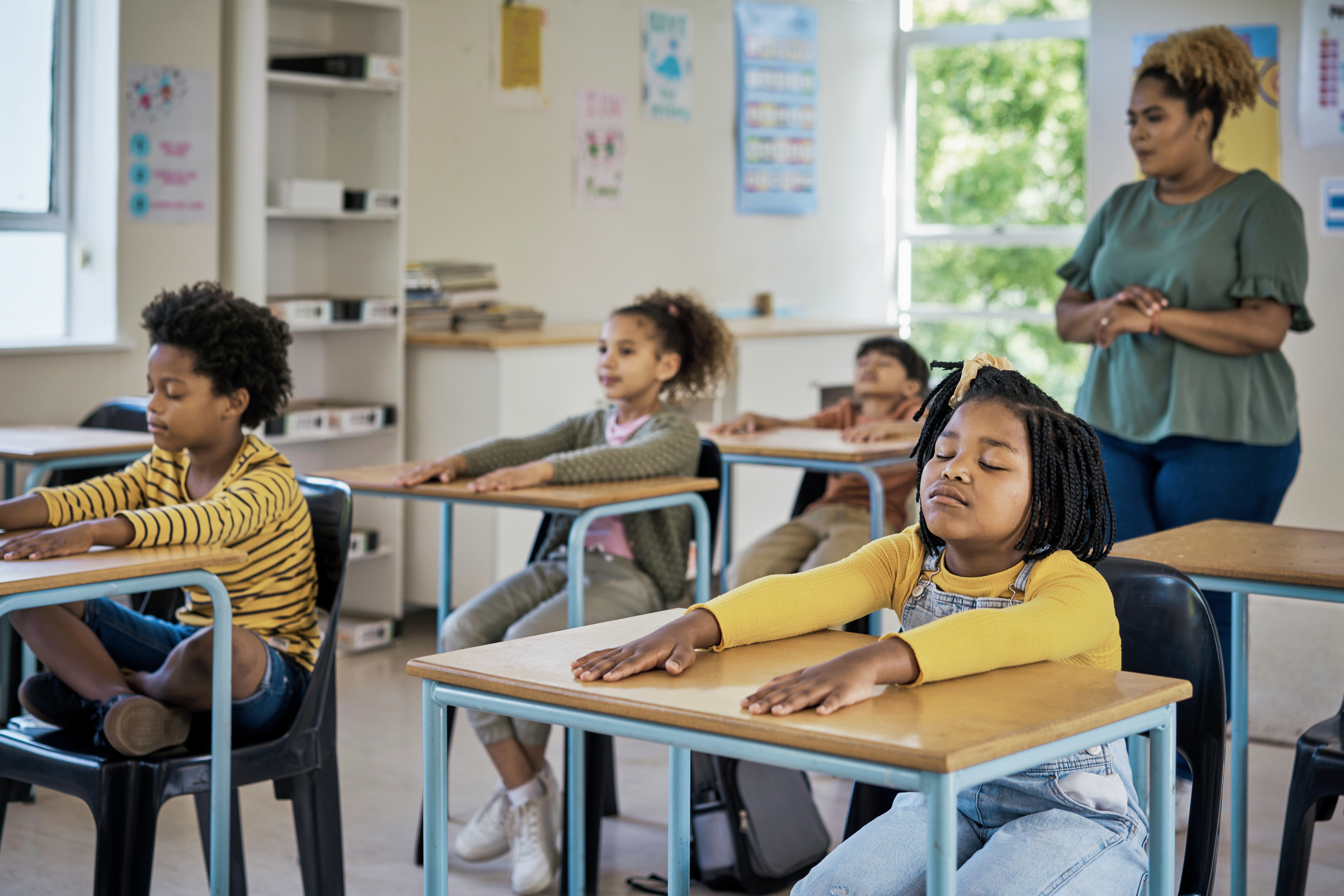Ashley Valentine is an experienced high school English teacher passionate about innovative and diverse teaching practices, and strategies that support students' social-emotional learning and well-being.
Without wellness, it's impossible to teach and learn. Read on for simple self-care and mindfulness strategies and activities that can be implemented daily to promote wellness for your students.

As an English teacher, I've certainly become accustomed to “the grind.” When I taught ninth-graders, I’d teach two units simultaneously: William Shakespeare’s Romeo and Juliet and a research skills unit. I can also remember a time when I was tutoring for hours after school, going to the gym, and dragging myself home after 8:00 p.m. In 2020, a certain event, the global pandemic, really shifted into focus the incomparable power of wellness and a reasonable pace of day for both myself as a teacher and my students.
Pre-pandemic student self-care activities
Prior to the pandemic, my students and I would enjoy a “Fri-Yay.” We would do a mindfulness activity or something fun in place of days that required a “heavier lift.” Sometimes it would delay our pace of learning, but I often instituted these days when I could really sense their stress and burnout. There’d be a buzz of lamentation, “Oh that test in science…” or “How did you do on the Spanish quiz?” or “When is that project due in history? I’ll have to stay up all night.” Those were often my cues to do what I could to… put simply… give them a break. Our “Fri-Yays” offered respite. On other days, I’d implement “Coffee Shop Mode.” The idea here is that everyone pretends like they’re working from a coffee shop. No one converses, but everyone works diligently and enjoys a drink and a snack. Both strategies were simple ways to facilitate peace and productivity.
I put a strong emphasis on wellness. Without wellness, it’s impossible to teach and learn. I therefore wanted to be really pointed in stating that “light work” is good for both students and teachers, who, before bearing those labels, are human beings who must also prioritize their wellbeing.
Whether you're an elementary school teacher who greets their kids hustling off the bus each morning or a high school teacher with students switching classes, you really have no idea what it is outside of the classroom that may be impacting students’ mental health.
And the same can be said for you– the teacher– and what’s happened to you during those same hours. That's why it's really important to give yourself permission to be in tune with and modify the pace of your environment to prioritize your emotional health.
Self-care ideas for the classroom
In order to add a little bit of lightness to my classroom, here are some of the self-care activities I implement almost daily:
1. Implement a relaxing daily routine
Part of my daily routine in the classroom is to stream music as students arrive. At the start of the year, I like to ask students for a suggested list of songs. As long as the content isn’t explicit, I go ahead and add it to our classroom playlist which is aptly titled “Waiting Room.”
Music can help to elevate mood, set a tone, or give students a moment to decompress. Sometimes I’ll say, “At the end of this song we’re going to get rolling, so be prepared to resist your phone and center your focus.”
2. Take necessary breaks
Our school schedule affords us a few days that provide extended blocks of class time: 80 minutes. Those sessions are long and when I feel my students waning, we’ll take a 5-10 minute break. It works. I get far fewer students requesting to leave during pertinent instructional time. Dividing a longer class session into halves makes the content more digestible for students. Not only that, but the breaks provide an opportunity for both teachers and students to partake in self-care habits such as deep breathing.
3. Consider a “slow start”
I also love a “slow start.” I typically teach students during the early morning periods of the day. While I’m an “early bird,” I’ll occasionally encounter a bit of chaos and need time to decompress. Maybe my lesson isn’t entirely what I want and I need to make a change, perhaps I’m feeling scattered or stressed, or maybe I just need a few sips of coffee before we “get rolling.”
If we’re in a “slow start,” I’ll tell students, “Good morning, we’re having a slow start. Take a few minutes to ease into your day and we’ll begin at 8:05 a.m. See you then.” Again, all of that humanizes the space and adds to the positive and responsive climate.
4. Keep de-stressors at hand
In our classroom resource closet, I keep stress balls and various fidget implements. If a student needs a break or has to redirect that energy, these tools can really make a difference. They can help students develop healthy habits and coping skills for stress so that they can focus better on the lesson.
5. Try ASMR and ambiance rooms for focused work
Another tool that really resonates with students has to do with ASMR (autonomous sensory meridian response) and ambiance rooms. Students love these! Prior to doing so with your students, tour and preview ASMR YouTube videos, podcasts, and ambiance rooms. In particular, my students like “sand cutting” ASMR.
Also on YouTube, they enjoy “ambiance rooms” for background noise. The ambiance rooms provide an effect similar to that of a virtual Yule log; the video sets a vibe. We made great use of a rainy-day library-themed ambiance room when we wanted to focus on editing and revising our research papers this past winter.
6. Implement a “wellness pass”
In addition to our bathroom/ drink pass, I created a wellness pass. The wellness pass has an image of a lotus on it. I explained to students at the start of the year that the intended use of that pass is for when students need a few moments to decompress privately or with a counselor. As a secondary option, I also tell students that they can give me a note or use the phrase “lotus,” if they want to communicate their needs with more discretion.
Whether you’re an educator, administrator, or other school professional, it's true that you and your students may have moments where the pace of school feels fast or overwhelming. Remember that in addition to having the appropriate professional support in place, having a toolkit of wellbeing resources and strategies to acknowledge and manage those moments is really important. After all, we’re only human!










